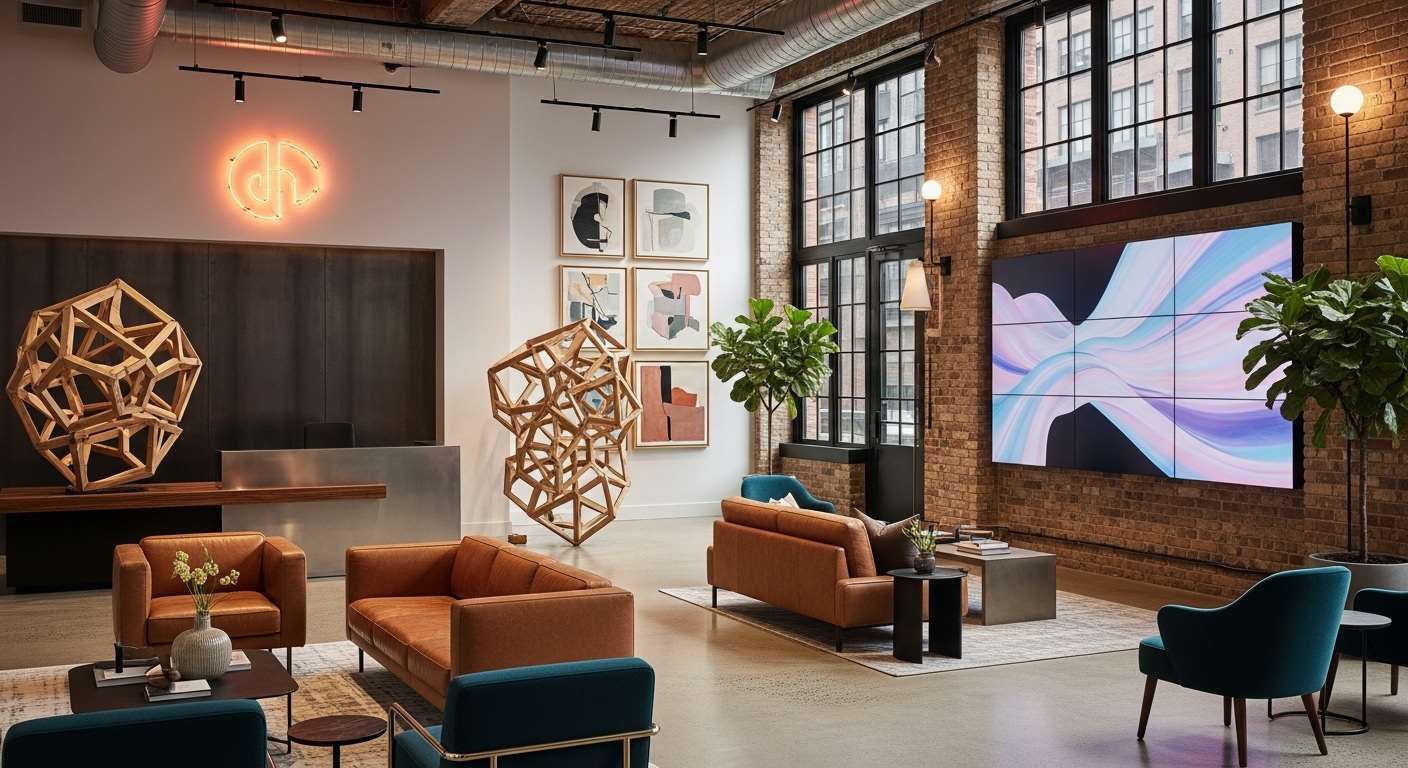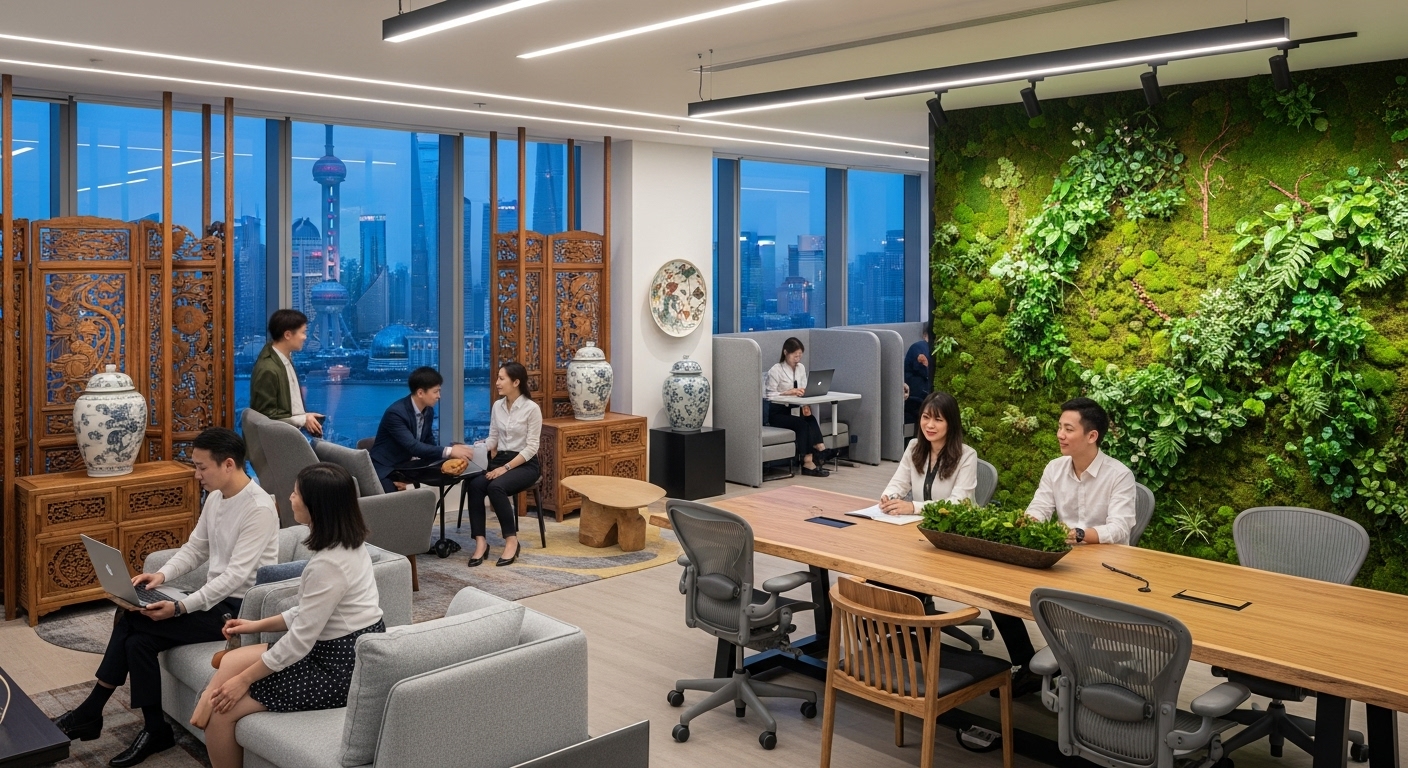In a city that never sleeps, standing out is the ultimate challenge. New York City is a relentless current of brands, messages, and experiences, all competing for a sliver of the public’s attention. In this environment, a logo on the door and a neutral-colored lobby are no longer enough to make a lasting impression. Today, forward-thinking businesses are embracing experiential space branding—a strategic approach that transforms physical environments into immersive, memorable, and authentic extensions of their brand identity. It’s about moving beyond passive decoration and actively engaging visitors, employees, and clients in a multi-sensory narrative. This guide explores how to craft a branded space that not only captures attention but also fosters genuine connection and loyalty in the world’s most competitive market. We will delve into the psychology of design, the integration of local culture, the role of technology, and the logistical keys to creating a space that truly tells your story.
The new vocabulary of brand experience
Experiential branding is the practice of designing a physical space that communicates a brand’s values, personality, and story through sensory engagement. It’s a departure from traditional interior design, where aesthetics might be the primary goal. Instead, every element—from the texture of the furniture and the scent in the air to the lighting and the acoustics—is intentionally chosen to evoke a specific feeling and reinforce the brand’s core message. In a landscape saturated with visual noise, this approach creates a powerful differentiator. The goal is to create a ‘phygital’ environment, a seamless blend of the physical and digital realms. This could manifest as interactive digital walls that respond to movement, augmented reality (AR) overlays that provide product information, or personalized experiences triggered by a visitor’s smartphone. The key is to make the experience active rather than passive. By creating these engaging moments, brands can foster a deeper emotional connection with their audience, turning a simple visit into a memorable event that people are eager to share, both online and off.
The psychology of space: designing for feeling
At its core, branding a space is an exercise in applied psychology. The design of an environment has a profound and often subconscious impact on human emotion, behavior, and perception. Understanding these principles is critical to creating a space that not only looks on-brand but feels on-brand. Color psychology, for instance, is a powerful tool; blues and greens can create a sense of calm and focus, making them ideal for deep work zones, while energetic yellows or oranges can stimulate creativity and conversation in collaborative areas. Light is another crucial factor. Access to natural light is proven to boost mood and productivity, a principle known as biophilic design. This concept involves incorporating natural elements like wood, stone, and abundant plant life to tap into our innate connection with nature, reducing stress and improving cognitive function. The very layout of a space dictates flow and interaction. Open, airy designs can encourage collaboration and transparency, while cozier, defined nooks can provide the privacy needed for concentration, catering to a neurodiverse workforce with varying needs for stimulation and quiet.
Weaving the five boroughs into your brand story
Authenticity is paramount in branding, and for any business operating here, that means acknowledging the city’s powerful character. Integrating local culture is not about plastering subway maps on the wall; it’s about subtly infusing the spirit of the city into your brand’s narrative. A financial firm in the Financial District might draw inspiration from the area’s architectural history, using materials like brass and marble in a modern context. A tech startup in Brooklyn could embrace the borough’s industrial-chic aesthetic with reclaimed wood, exposed brick, and commissioned murals from local street artists. The key is to be specific and intentional. By collaborating with local artisans, fabricators, and artists, a business in New York City can create a space that feels genuinely connected to its community. This approach not only supports the local economy but also results in a unique environment that cannot be replicated, telling a story of place and purpose that resonates with employees and visitors alike on a much deeper level.
Technology as the storyteller’s brush
In the modern branded environment, technology is not just a utility; it’s a dynamic and interactive storytelling tool. Digital installations can transform a static lobby into a living canvas that evolves throughout the day, showcasing brand stories, data visualizations, or digital art that reflects the company’s ethos. Well-integrated technology can create the personalized, ‘phygital’ experiences that define contemporary branding. Imagine a retail space where a customer can use an AR-powered app to see how a piece of furniture would look in their own home, or a corporate welcome area where a visitor’s name and company logo are seamlessly integrated into a digital display upon their arrival. These tech-infused moments are highly shareable, generating organic social media buzz that extends the brand’s reach far beyond its physical walls. However, the integration must be purposeful and seamless. Technology should enhance the human experience, not complicate it. When used thoughtfully, it can create moments of surprise and delight that make the brand’s story more engaging, memorable, and impactful.
Differentiating design for diverse spaces
The principles of experiential branding are not one-size-fits-all. The strategy must be tailored to the specific function of the space and the audience it serves. A customer-facing retail environment on Madison Avenue has vastly different goals than a private corporate headquarters overlooking Bryant Park. For retail, the focus is on ‘retailtainment’—blending shopping with entertainment to create an immersive brand world that drives sales and loyalty. This could involve interactive product displays, in-store cafes, or event spaces. For a corporate office, the primary audience is the employees. Here, the branded environment is a tool for reinforcing company culture, attracting top talent, and fostering productivity and well-being. This means creating a variety of work settings that cater to different tasks and work styles—from vibrant collaborative hubs to quiet libraries for focused work. Regardless of the context, the diverse commercial landscape of New York City demands a thoughtful approach to ensure the space authentically reflects the brand’s unique mission and connects with its intended audience in a meaningful way.
Logistics and execution in the concrete jungle
Bringing a branded environment to life, especially in a dense urban center, requires meticulous planning and expert execution. The logistical challenges are unique and complex, from navigating building codes and landmark preservation restrictions to coordinating deliveries on congested streets and working within the tight confines of existing high-rise floors. Assembling the right team is the most critical first step. This typically includes interior architects, branding specialists, technology integrators, and skilled contractors who have extensive experience with local regulations. A clear project roadmap with defined milestones, transparent communication channels, and a realistic budget is essential to keep the project on track. Material sourcing and lead times must also be carefully managed. The intricate logistics of executing a major interior project in New York City mean that foresight and contingency planning are not just beneficial—they are indispensable for a successful transformation that is completed on time and on budget, ultimately turning a powerful vision into a tangible reality.
Ultimately, branding your space is about creating a destination. It’s about crafting an environment so aligned with your core identity that it speaks for you, telling your story to every person who walks through the door. In a city of millions, a well-executed experiential space is more than just a physical asset; it’s a strategic command center for your brand, a cultural hub for your team, and a powerful statement of your place in the world. By thoughtfully considering the psychological impact of design, authentically integrating local culture, leveraging technology, and mastering the complex logistics, you can create a space that transcends the ordinary. It becomes an environment that not only makes its mark on the urban landscape but also leaves a lasting and positive impression on the people who matter most to your business. This investment in physical identity is an investment in connection, culture, and a competitive edge that cannot be easily replicated.





